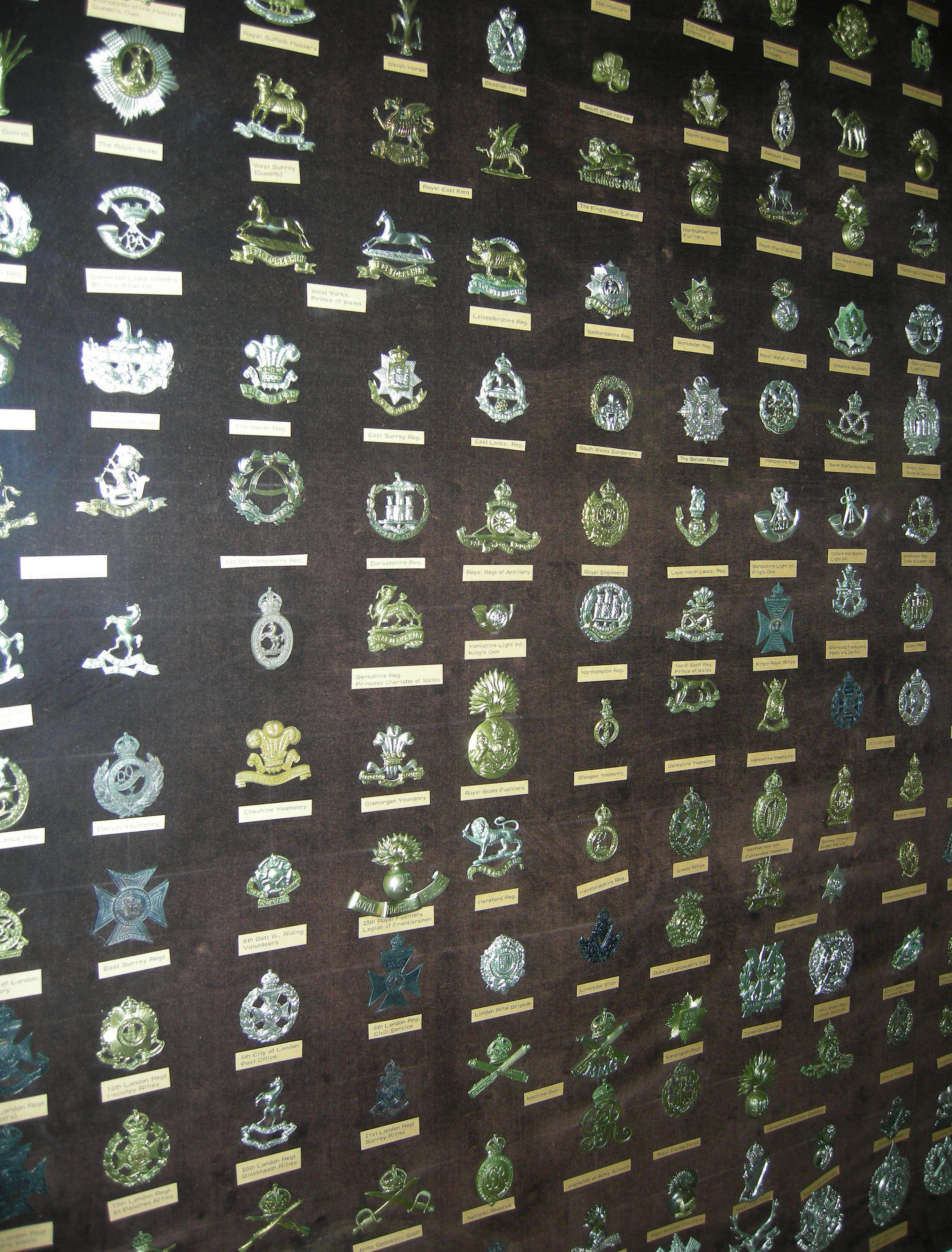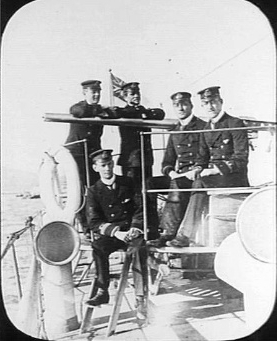|
No. 50 Commando
No. 50 Commando was a battalion-sized British Commando unit of the British Army during the Second World War. The commando was formed in 1940, from volunteers in Egypt and Palestine. Shortly after formation it was amalgamated with No. 52 Commando and became 'D' Battalion, Layforce. Background The commandos were formed in 1940, by the order of Winston Churchill the British Prime Minister. He called for specially trained troops that would "develop a reign of terror down the enemy coast". At first they were a small force of volunteers who carried out small raids against enemy occupied territory, but by 1943 their role had changed into lightly equipped assault Infantry which specialised in spearheading amphibious landings. The man initially selected as the overall commander of the force was Admiral Sir Roger Keyes himself a veteran of the landings at Galipoli and the Zeebrugge raid in the First World War. Keyes resigned in October 1941 and was replaced by Admiral Louis Mountb ... [...More Info...] [...Related Items...] OR: [Wikipedia] [Google] [Baidu] |
Commando
A commando is a combatant, or operative of an elite light infantry or special operations force, specially trained for carrying out raids and operating in small teams behind enemy lines. Originally, "a commando" was a type of combat unit, as opposed to an individual in that unit. In other languages, ''commando'' and ''kommando'' denote a "Command (military formation), command", including the sense of a military or an elite special operations unit. In the militaries and governments of most countries, commandos are distinctive in that they specialize in unconventional assault on high-value targets. In English, to distinguish between an individual commando and a commando unit, the unit is occasionally capitalized. In China, the term "commando unit" (突击队) does not necessarily refer to a commando unit, but refers to special forces and Police tactical unit, police tactical units in general. Such use includes the Special Operations Brigade (PLA Navy Marine Corps), Jiaolong Command ... [...More Info...] [...Related Items...] OR: [Wikipedia] [Google] [Baidu] |
Layforce
Layforce was an ad hoc military formation of the British Army consisting of a number of commando units during the Second World War. Formed in February 1941 under the command of Colonel Robert Laycock, after whom the force was named, it consisted of approximately 2,000 men and served in the Middle Eastern theatre of operations. Initially tasked with conducting raiding operations to disrupt Axis lines of communication in the Mediterranean it was planned that they would take part in operations to capture the Greek island of Rhodes. As the strategic situation in the theatre turned against the Allies, however, the commandos were largely diverted from their original role and were used primarily to reinforce regular troops throughout the Mediterranean theatre. Elements of the force saw action in Bardia, Crete, Syria and Tobruk before they were disbanded in August 1941. Afterwards its personnel either returned to their former units or went on to serve with other special forces units rais ... [...More Info...] [...Related Items...] OR: [Wikipedia] [Google] [Baidu] |
Cap Badge
A cap badge, also known as head badge or hat badge, is a badge worn on uniform headgear and distinguishes the wearer's nationality and/or organisation. The wearing of cap badges is a convention commonly found among military and police forces, as well as uniformed civilian groups such as the Scouting, Boy Scouts, civil defence organisations, ambulance services (e.g. the St. John Ambulance Brigade), customs services, fire services etc. Cap badges are a modern form of Heraldic badge, heraldry and their design generally incorporates highly symbolic devices. Some badges that contain images of lions or other cats are sometimes informally referred to as cat badges. Instances in military forces British armed forces The British Armed Forces utilise a variety of metal and cloth cap badges on their headdress, generally on caps and berets. They are also worn on Uniforms_of_the_British_Armed_Forces#Turbans, Sikh turbans. British Army In the British Army (as well as other Commonwealth o ... [...More Info...] [...Related Items...] OR: [Wikipedia] [Google] [Baidu] |
Section (military Unit)
A section is a military sub-subunit. It usually consists of between 6 and 20 personnel. NATO and U.S. doctrine define a section as an organization "larger than a squad, but smaller than a platoon." As such, two or more sections usually make up an army platoon or an air force flight. Land forces NATO Standard NATO symbol for a ''section'' consists of two dots (●●) placed above a framed unit icon. Australian Army At the start of World War I, the Australian Army used a section that consisted of 27 men including the section commander, a sergeant. During World War II, a rifle section comprised ten soldiers with a corporal in command and a lance-corporal as his second-in-command. The corporal used an M1928 Thompson submachine gun, while one of the privates used a Bren gun. The other eight soldiers all used No.1 Mk.3 Lee–Enfield rifles with a bayonet and scabbard. They all carried two or three No.36 Mills bomb grenades. After World War II, and during the Vietn ... [...More Info...] [...Related Items...] OR: [Wikipedia] [Google] [Baidu] |
Troops
A troop is a military sub-subunit, originally a small formation of cavalry, subordinate to a Squadron (cavalry), squadron. In many armies a troop is the equivalent element to the infantry section (military unit), section or platoon. Exceptions are the US Cavalry and the King's Troop Royal Horse Artillery where a troop is a subunit comparable to an infantry Company (military unit), company or artillery battery. Historically the remainder of the Royal Horse Artillery used the term ''troop'' in the same manner but they eventually aligned with the rest of the Royal Regiment of Artillery in referring to troops as subordinate to artillery batteries. ''Troops'' is often used to refer to the other members of one's company or cause, but because of its military connotations, it conveys a particularly altruistic type of dedicated worker. Traditionally, ''troops'' refers to the soldiers in a military. A cavalry soldier of Private (rank), private rank is called a "trooper (rank), trooper" ... [...More Info...] [...Related Items...] OR: [Wikipedia] [Google] [Baidu] |
Special Service Brigade
The Special Service Brigade was a formation of the British Army during the Second World War. It was formed in 1940, after the call for volunteers for Special Service who eventually became the British Commandos. Background In 1940, volunteers were called for from serving British Army soldiers within certain formations still in Britain and men of the disbanding Divisional Independent Companies originally raised from Territorial Army (TA) divisions and who had seen service in the Norwegian Campaign. In November 1940 these army units were organised into a Special Service Brigade under Brigadier J. C. Haydon with five Special Service battalions. By the autumn of 1940 more than 2,000 men had volunteered for commando training, and the Special Service Brigade now consisted of 12 units which were now called commandos.Haskew, p.48 Each commando would number around 450 men, commanded by a lieutenant-colonel. They were divided into troops of 75 men and further divided into 15-man sect ... [...More Info...] [...Related Items...] OR: [Wikipedia] [Google] [Baidu] |
Louis Mountbatten, 1st Earl Mountbatten Of Burma
Admiral of the Fleet (Royal Navy), Admiral of the Fleet Louis Francis Albert Victor Nicholas Mountbatten, 1st Earl Mountbatten of Burma (born Prince Louis of Battenberg; 25 June 1900 – 27 August 1979), commonly known as Lord Mountbatten, was a British statesman, Royal Navy officer and close relative of the British royal family. He was born in the United Kingdom to the prominent Battenberg family. He was a maternal uncle of Prince Philip, Duke of Edinburgh, and a second cousin of King George VI. He joined the Royal Navy during the First World War and was appointed Supreme Allied Commander, South East Asia Command, in the Second World War. He later served as the last Viceroy of India and briefly as the first Governor-General of the Dominion of India. Mountbatten attended the Royal Naval College, Osborne, before entering the Royal Navy in 1916. He saw action during the closing phase of the First World War, and after the war briefly attended Christ's College, Cambridge. During the ... [...More Info...] [...Related Items...] OR: [Wikipedia] [Google] [Baidu] |
First World War
World War I or the First World War (28 July 1914 – 11 November 1918), also known as the Great War, was a World war, global conflict between two coalitions: the Allies of World War I, Allies (or Entente) and the Central Powers. Fighting took place mainly in European theatre of World War I, Europe and the Middle Eastern theatre of World War I, Middle East, as well as in parts of African theatre of World War I, Africa and the Asian and Pacific theatre of World War I, Asia-Pacific, and in Europe was characterised by trench warfare; the widespread use of Artillery of World War I, artillery, machine guns, and Chemical weapons in World War I, chemical weapons (gas); and the introductions of Tanks in World War I, tanks and Aviation in World War I, aircraft. World War I was one of the List of wars by death toll, deadliest conflicts in history, resulting in an estimated World War I casualties, 10 million military dead and more than 20 million wounded, plus some 10 million civilian de ... [...More Info...] [...Related Items...] OR: [Wikipedia] [Google] [Baidu] |
Zeebrugge Raid
The Zeebrugge Raid (; ) on 23 April 1918, was an attempt by the Royal Navy to block the Belgium, Belgian port of Bruges-Zeebrugge. The British intended to sink obsolete ships in the canal entrance, to prevent German vessels from leaving port. The port was used by the Imperial German Navy as a base for U-boats and light shipping, which were a threat to Allies of World War I, Allied control of the English Channel and southern North Sea. Several attempts to close the Flanders ports by bombardment failed and Operation Hush, a 1917 plan to advance up the coast, proved abortive. As ship losses to U-boats increased, finding a way to close the ports became urgent and the British Admiralty, Admiralty became more willing to consider a raid. An attempt to raid Zeebrugge was made on 2 April 1918 but was cancelled at the last moment, after the wind direction changed and made it impossible to lay a Smoke-screen, smokescreen to cover the ships. Another attempt was made on 23 April, with a con ... [...More Info...] [...Related Items...] OR: [Wikipedia] [Google] [Baidu] |
Roger Keyes
Admiral of the Fleet Roger John Brownlow Keyes, 1st Baron Keyes, (4 October 1872 – 26 December 1945) was a British naval officer. As a junior officer he served in a corvette operating from Zanzibar on slavery suppression missions. Early in the Boxer Rebellion, he led a mission to capture a flotilla of four Chinese destroyers moored to a wharf on the Peiho River. He was one of the first men to climb over the Peking walls, to break through to the besieged diplomatic legations and to free them. During the First World War Keyes was heavily involved in the organisation of the Dardanelles Campaign. Keyes took charge in an operation when six trawlers and a cruiser attempted to clear the Kephez minefield. The operation was a failure, as the Turkish mobile artillery pieces bombarded Keyes's minesweeping squadron. He went on to be Director of Plans at the Admiralty and then took command of the Dover Patrol: he altered tactics and the Dover Patrol sank five U-boats in the fir ... [...More Info...] [...Related Items...] OR: [Wikipedia] [Google] [Baidu] |





